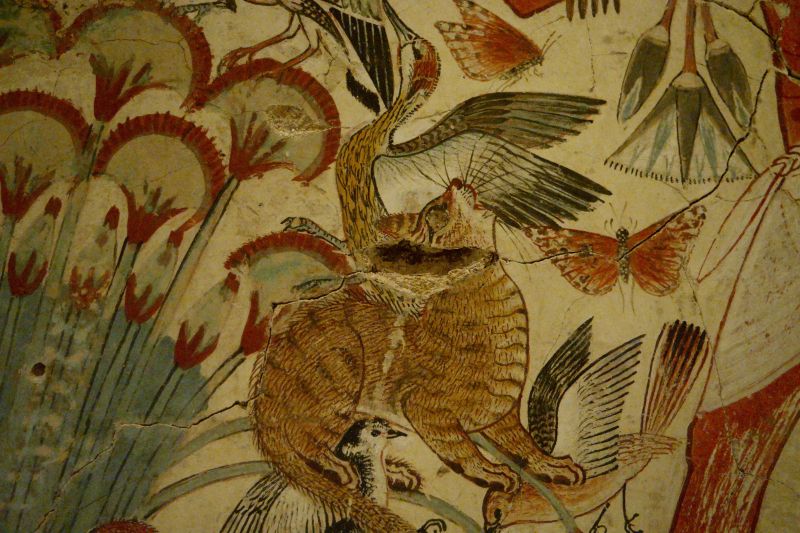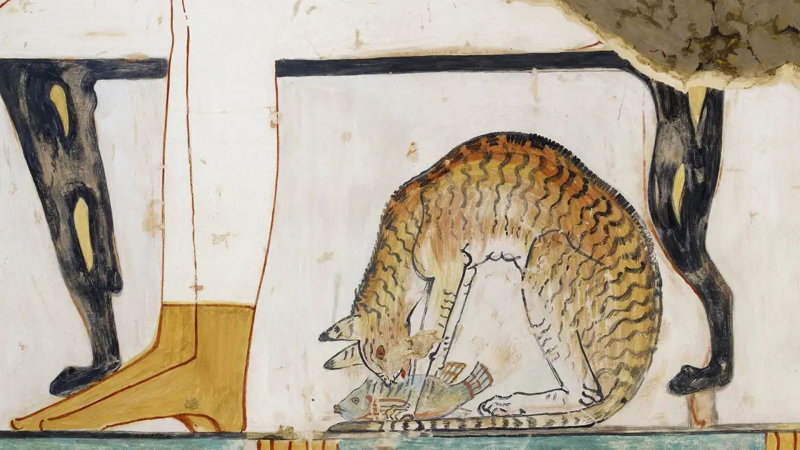Domestic cats is considered beloved companions.
The greatest way to follow the cat's rise to renown in ancient Egypt is via art. The mural uncovered in the tomb of an Egyptian official Baqet III (dated to the 21st century BCE) depicts a cat facing a field rat, demonstrating the animal's critical function in crop protection. However, from around 1450 BCE, the cat began to appear rather regularly in tomb scenes, particularly in Thebes, Egypt's capital during the New Kingdom era. The renowned Nebamun fresco depicts a wonderfully painted cat attacking birds while accompanying its owner on a fowl hunt. The detailed depiction of the 3500-year-old tabby might well be mistaken for a work by the "ancient masters."
By this time, the cat had evolved into a spoiled pet, beloved by monarchs and noble families. This transformation can be seen in the tomb scenes, which go from outside to more intimate, residential settings. The cat sitting near or under the owner's chair serves as a reminder of the animal's changed function. While it is undeniable that cats formed an important part of the home in both urban and rural settings, portrayals of the felines can be interpreted in a variety of ways. We must not forget that ancient Egyptian paintings had symbolic implications as well. For example, the cat was frequently shown under the wife's chair, signifying fertility and femininity, and supplementing the long-established motif of dogs sitting or laying under her husband's chair.








